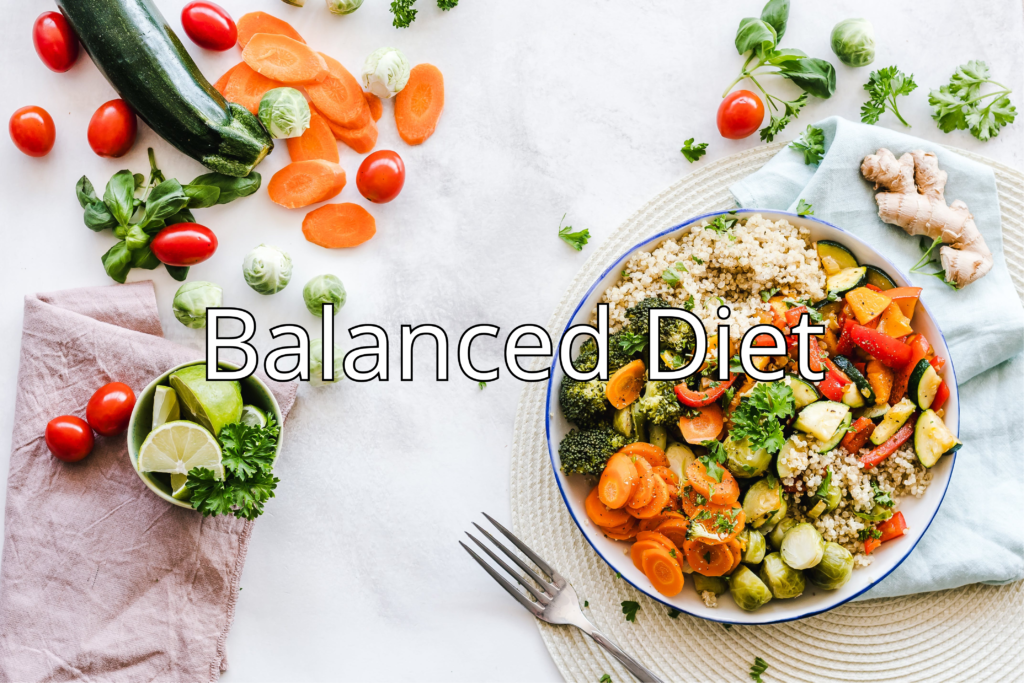Introduction to Diet Chart
Health enthusiasts, welcome to our comprehensive guide on diet chart! In the hustle and bustle of modern life, maintaining a healthy diet often gets left behind. But don’t be afraid! This blog is your one-stop destination to understand the importance of a balanced diet and create your own personalised diet chart.
Chapter 1: Why a Balanced Diet Matters
Let’s start with the basics. A balanced diet provides your body with the nutrients it needs to function properly. It’s like giving your car the right fuel – only then can it run smoothly. A balanced diet not only increases your energy levels but also promotes your overall health.
Chapter 2: Building Blocks of a Balanced Diet
1. Carbohydrates:
Carbohydrates are your body’s primary energy source. Include whole grains, fruits and vegetables in your diet for steady energy supply throughout the day.
2. Proteins:
Proteins are essential for repairing tissues and building muscles. Include sources like lean meat, fish, eggs, beans and nuts in your diet.
3. Fats:
Not all fats are bad! Healthy fats, such as those found in avocados, nuts and olive oil, are important for brain health and the absorption of certain vitamins.
4. Vitamins and Minerals:
These are like the body’s superheroes, supporting various functions and boosting your immune system. Eat a variety of fruits and vegetables to get a variety of nutrients.
5. Hydration:
Water is often underestimated. It keeps you hydrated, aids digestion and flushes out toxins. Don’t forget to drink plenty of water throughout the day.
Chapter 3: Creating Your Personalized Diet Chart
1. Understand Your Caloric Needs:
Calculate your daily caloric requirement based on your age, gender, weight, and activity level. This will be the foundation of your diet plan
2. Plan Your Meals:
Divide your daily caloric intake into three main meals (breakfast, lunch, and dinner) and two snacks. Ensure each meal includes a balance of carbohydrates, proteins, fats, vitamins, and minerals.
3. Portion Control:
Be mindful of portion sizes. Eating in moderation is key to maintaining a healthy weight and preventing overeating.
4. Stay Consistent:
Consistency is the key to success. Stick to your diet chart and make gradual, sustainable changes. Avoid crash diets, as they often lead to short-term results and long-term frustration.
5. Listen to Your Body:
Pay attention to how your body feels after a meal. If you feel energetic and satisfied, you are on the right track. If you feel sluggish or bloated, consider adjusting your food choices.
Chapter 4: Practical Tips for Success
1. Meal Prep:
Spend some time each week preparing healthy meals and snacks. Having nutritious options readily available will keep you from reaching for unhealthy options.
2. Include Variety:
Experiment with different foods and recipes to keep your meals exciting. Variety not only keeps things interesting but also ensures you get a wide range of nutrients.
3. Stay Active:
Regular physical activity complements a healthy diet. Find an activity you enjoy, whether it’s dancing, hiking, or just walking, and make it part of your daily routine.
4. Seek Support:
Share your goals with friends or family members who can provide encouragement and motivation. Consider consulting a nutritionist for professional guidance tailored to your specific needs.
Conclusion
Congratulations! You’ve unlocked the secrets of creating a personalised diet chart that suits your lifestyle and preferences. Remember, a balanced diet is not about deprivation; It’s about nourishing your body and enjoying a healthy, happy life. So, embrace the journey, enjoy every nutritious meal, and here you are, a healthy person!

